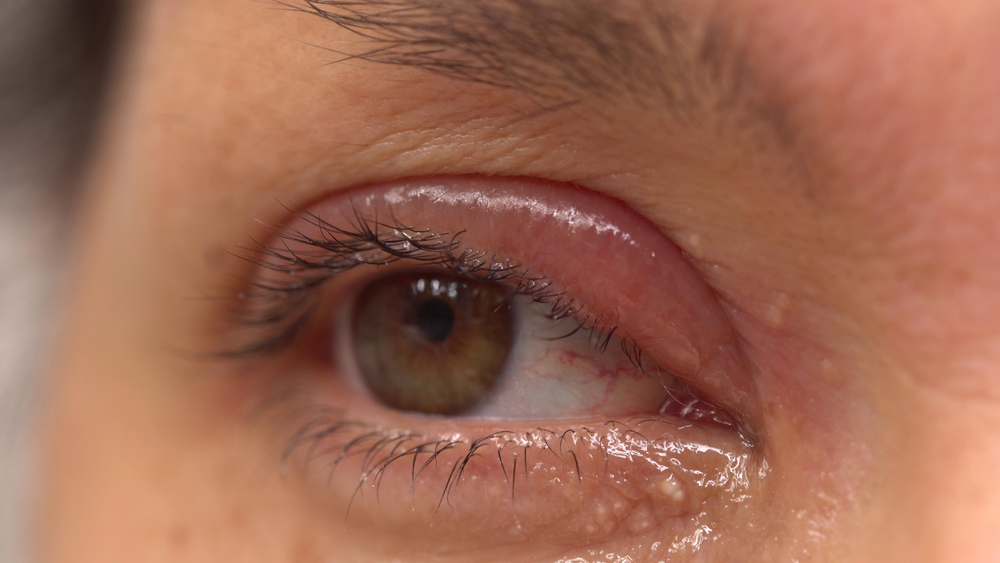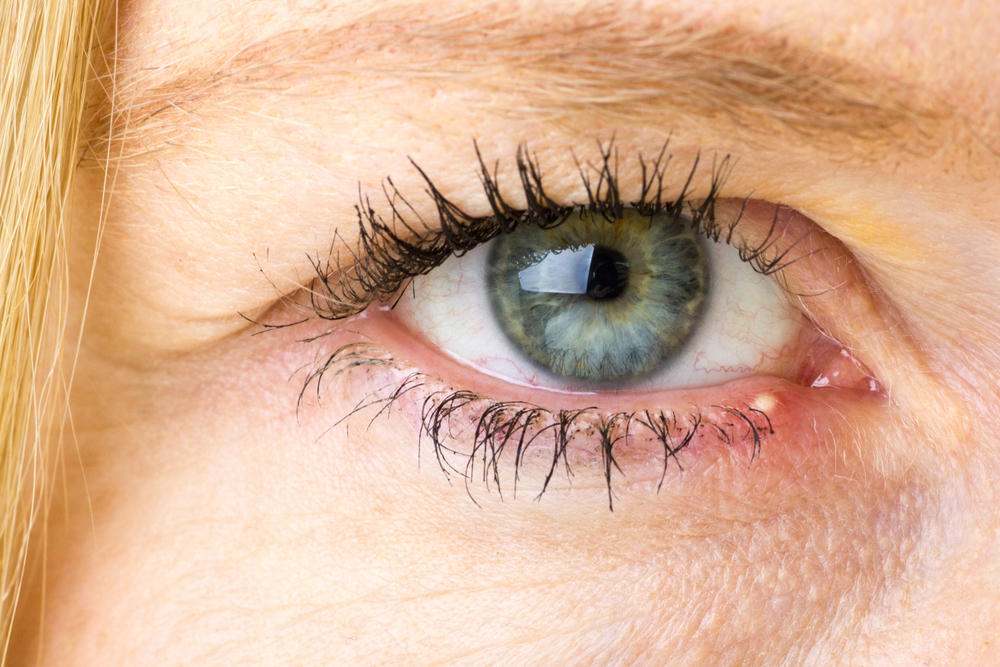How to Treat Sebaceous Gland on Eyelid?
A sebaceous gland on the eyelid is an aesthetically disturbing skin problem that usually occurs on both eyes. Clogging of the pores around the eyes for various reasons, high triglyceride or cholesterol levels, excessive alcohol consumption may cause oil glands to appear on the eyelid. Although the oil glands that appear on the eyelid are aesthetically disturbing, they are generally not large enough to obstruct vision. Therefore, for most cases, no treatment may be necessary. However, in some cases, these oil glands can grow and restrict the movements of the eyelid. In such cases, sebaceous glands need to be treated with various methods. Nowadays, with the help of developing technology, the oil glands on the eyelid are treated using treatment methods such as laser or radiation therapy. “What causes oil glands on the eyelid and how to get rid of them?”, “Does the oil gland on the eyelid turn into cancer?”, “Do oil glands prevent vision?”. Answers to questions like these and other curious questions about the oil glands around the eyes are discussed in detail in the following parts of the article.

SUBJECT TITLES
What Causes Oil Gland on the Eyelid?
Sebaceous glands, also called lipoma or lipoma, can appear in any part of the body, including the eyelid. Sebaceous glands, which are mostly benign, soft swellings in which fat accumulates, can also appear on the eyelids and around the eyes.
There are many types of oil glands seen on the eyelids. One of the most common of these is the glands, also called xanthelasma, which are formed as a result of the accumulation of cholesterol and immune system cells on the skin (1). The sebaceous glands, which can be yellow, beige or whitish in color, have a soft and mobile structure when touched by hand. Lipomas are formations consisting of lipids located under the skin, which usually do not show any symptoms of the disease. This condition may be caused by a malfunction in lipoprotein metabolism, which is generally responsible for carrying fat cells in the body. A diet rich in saturated fats and cholesterol, being overweight, lack of physical activity, and harmful habits such as alcohol or smoking can cause disruption of lipid metabolism and high cholesterol and triglyceride levels (2).
The appearance of a sebaceous gland on the eyelid. Various factors may play a role in its outcome. Xanthelasmas can also occur as a symptom of another health problem, such as diabetes, hyperlipidemia (high cholesterol), and thyroid problems. Research shows that those with excess fat glands in their bodies may have a higher risk of developing health problems such as heart disease, heart attack and atherosclerosis (hardening of the arteries) in the future (1).
How to Get Rid of Oil Patch on the Eyelid?
Sebaceous glands formed on the eyelid usually do not disappear on their own, so treatment may be required. However, paying attention to some factors can help reduce the risk of oil gland formation on the eyelid. Nutritional habits also play important roles in the formation of sebaceous glands. It is especially important for people who have oil gland problems in the upper eyelid or under-eye area to choose a diet low in saturated fats, trans fats and cholesterol. In addition, including fiber-rich fruits, vegetables and whole grain foods in the diet can help regulate cholesterol levels.
It is also important to take care to consume more healthy fat sources in preventing the formation of sebaceous glands. For example, fatty fish such as salmon, walnuts and olive oil can help regulate cholesterol levels and prevent the formation of oil glands, thanks to the Omega-3 fatty acids they contain.
How to Treat Sebaceous Gland on Eyelid?
Sebaceous glands formed on the eyelid usually do not go away on their own. These oil glands often need to be treated by a specialist doctor and removed from the eyelid. Oil glands are mostly harmless formations; However, in some cases it may be aesthetically disturbing. However, the oil glands around the eyes can grow and restrict the movement of the eyelids over time. For this reason, if there is a sebaceous gland on the eyelid, it is recommended to consult a specialist doctor and determine the appropriate treatment method. The main methods used in the treatment of oil glands on the eyelid are as follows:
- Surgery: These are operations in which the oil gland on the eyelid is removed with the help of a small incision. Surgical treatment of oil glands on the eyelid is usually performed under local anesthesia. Doctors may decide that surgical treatment methods should be used in the treatment of oil glands that are generally large and prevent eyelid movements.
- Liquid nitrogen cryotherapy: Cryotherapy using liquid nitrogen is performed by supercooling the oil gland. In this method, low temperature destroys the gland by freezing.
- Laser surgery: Laser treatment targets the sebaceous gland by using intense light energy and aims to destroy the gland by breaking it down.
- Radiofrequency ablation: Radiofrequency ablation is a method that uses radio waves. In this method, the sebaceous gland is destroyed by using high frequency energy.
- Chemical peeling: Chemical peeling is a treatment method in which a special solution is used. This solution can help shrink the sebaceous gland by peeling off the upper layer of the skin.
Doctors will determine which treatment method to use, the size of the sebaceous gland, its location and the patient's condition. They decide by taking their preferences into consideration.

Which Doctor Should You See for Glands on the Eyelids?
It is important for the glands that appear in the eye to be evaluated by a specialist. Ophthalmologist can evaluate the type of mass by observing factors such as the size, shape, hardness and mobility of the sebaceous gland during the physical examination. In addition, factors such as the patient's symptoms and whether there is a history of sebaceous glands in the family are also taken into consideration. The specialist ophthalmologist may order additional tests such as blood tests and lipid profile tests (to measure cholesterol levels) if deemed necessary to determine the nature of the sebaceous gland and rule out other potential problems. Treatment methods are decided after some examinations performed by the doctor.
Does the Oil Gland on the Eyelid Turn into Skin Cancer?
The oil glands that appear on the eyelid are mostly benign formations and their risk of turning into cancer is low. However, when a mass is noticed anywhere in the body, it is important for a specialist doctor to determine whether the mass carries a risk of cancer. For this reason, when a mass such as a sebaceous gland is noticed on the eyelids, it is important to contact a health institution, consult a specialist ophthalmologist and have the necessary checks done. A specialist ophthalmologist first evaluates the characteristics of the mass by performing a physical examination in patients who complain of a fatty gland on the eyelid. In some cases, a specialist doctor may use diagnostic procedures such as biopsy to determine the type of mass and cancer risk.
Do Eyelid Fat Patches Recur?
Sebaceous glands may occur due to many factors, including genetic predisposition. Several different treatment methods are used in the treatment of sebaceous glands. Most of the time, the sebaceous glands disappear after treatment. In addition, there is a risk of recurrence of sebaceous glands, especially those whose formation is affected by genetic factors, after treatment. There are some factors that play a role in the recurrence of sebaceous glands. The most important of these is that the sebaceous gland has not been completely removed. There is a risk of recurrence of sebaceous glands that are not completely removed. Additionally, if there is a tendency to gain fat in the body and/or a disruption in lipid metabolism, sebaceous glands may recur. It is possible to minimize the risk of recurrence of the fatty gland by taking precautions such as adopting life habits such as a healthy and balanced diet and being physically active. If you are experiencing oil gland problems around your eyes, do not forget to consult a specialist doctor and have the necessary checks.
Source
- https://my.clevelandclinic.org/health/diseases/ 23385-xanthelasma#management-and-treatment
- https://www.medicalnewstoday. com/articles/321267#causes
Tarih: 26/07/2023